
Advocates dream of Philadelphia as a water recreation wonderland
| August 18, 2025
On an unseasonably cool Saturday during one of this spring’s stretches of wet weather, 14-year-old Yazmine Acosta of South Philadelphia, greeted visitors at a lakeside dock at Franklin Delano Roosevelt Park, just across Broad Street from the Wells Fargo Center. Her slender arms outstretched, she demonstrated how to swoop a paddle’s ends in and out of the water in a figure eight fashion, instructing people twice her size and three times her age on proper kayaking technique.
Two years earlier, Acosta had never been in a kayak. In fact, at that point she barely knew that activities such as kayaking existed, especially so close to the boxed-in environs of her South Philly block. But when she saw fliers at her school for Discovery Pathways, a nonprofit with a mission to get more Philadelphians paddling on local waterways, she decided to try kayaking.
“I’ve learned so much about watersheds. I learned how to kayak properly. I even learned how to fish for the first time,” Acosta said. “I get to actually breathe air for once instead of just being cramped in a house.”
It wasn’t that long ago that Philadelphians regularly took to FDR’s lake — along with many of the city’s other waterways — to recreate.
The lake was formed during an initial landscaping of FDR Park by the Olmsted Brothers in the 1910s, and historical photographs show hundreds of people at a time swarming its banks and wading into its waters to swim. The activity used to be so popular that residents of nearby neighborhoods began calling the park “The Lakes,” according to Adam Forbes, founder of Discovery Pathways.
But Forbes isn’t focused on collecting memories of a bygone era. Instead, he’s interested in making new ones for current and future generations of Philadelphians who want to boat, fish and perhaps one day swim in the city’s waterways. Often, though, he feels like he’s fighting to break the logjam of the status quo.
“It’s a city of rivers. There are lots of possibilities to get out on water. But there are very few established access points,” Forbes said. “And the biggest thing we deal with historically is people think of the Schuylkill and Delaware as dirty. Even the lakes at FDR, a lot of people just think the water is polluted, dirty and unsafe.”
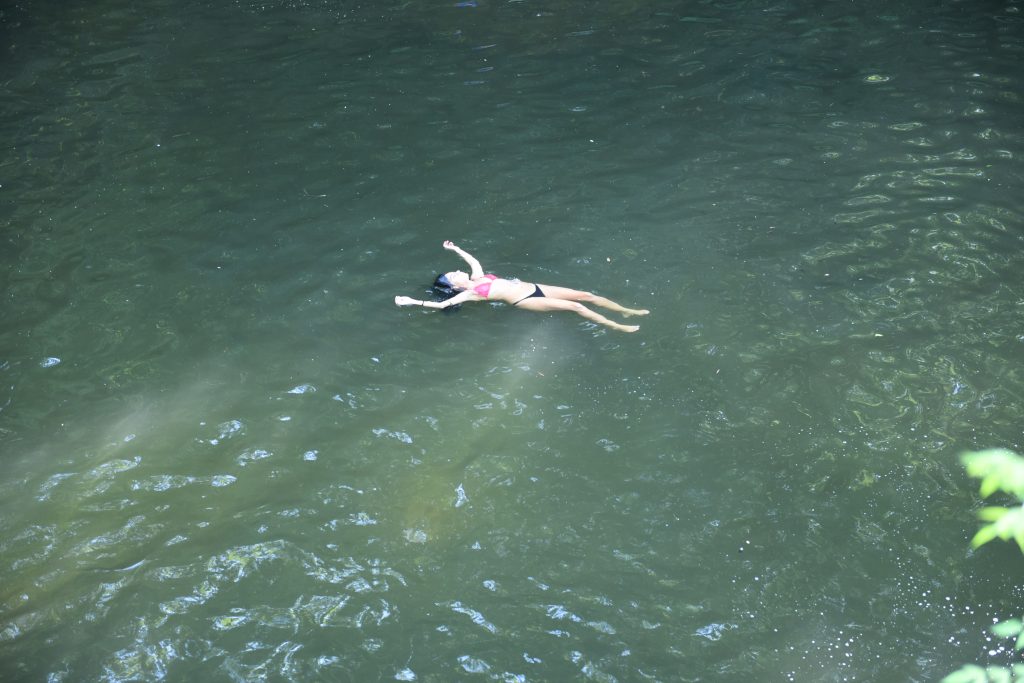
A vision for more water recreation
Forbes is part of a band of advocates in the city who envision a Philadelphia with far more water-based recreation. They picture waterways with less pollution and more boat launches, where all forms of water-based recreation are within reach geographically and financially for large numbers of city residents.
Stefanie Kroll, director of Riverways, a consortium of groups — Discovery Pathways among them — devoted to connecting people to the region’s waterways, said Philadelphians who want to kayak often travel outside the city to do so. She wants to create the right conditions for them to stay.
“We need access points, and we also need signage … routes that we could publish, the same way as the Circuit Trails,” Kroll said, referring to the network for bicyclists. “People could leave a car and grab a bus, paddle back, you know?”
But some advocates said they feel that power players in the city don’t prioritize water-based recreation. At best, they reason, that’s because officials and government offices may be focused elsewhere in a big, poverty-stricken city with a multitude of competing priorities and not enough money to pay for them all. But others suspect something else: a desire to avoid the topic entirely, lest more attention be drawn to the condition of the city’s rivers and creeks.
“The official position is, or attitude is, don’t go on the water. Don’t go in,” said Tim Dillingham, executive director of the American Littoral Society, a nonprofit focused on cleaning up waterways in the Delaware River watershed. “To me, that is not the appropriate position for public agencies to take. The best interest of the public lies in clean water, and they should be doing everything they can to engage.”
Numerous Philadelphia city agencies, including the Office of the Mayor, Parks & Recreation, the Department of Public Health, the Office of Risk Management and the Philadelphia Police Department Marine Unit, declined to be interviewed or provide answers to written questions for this article.
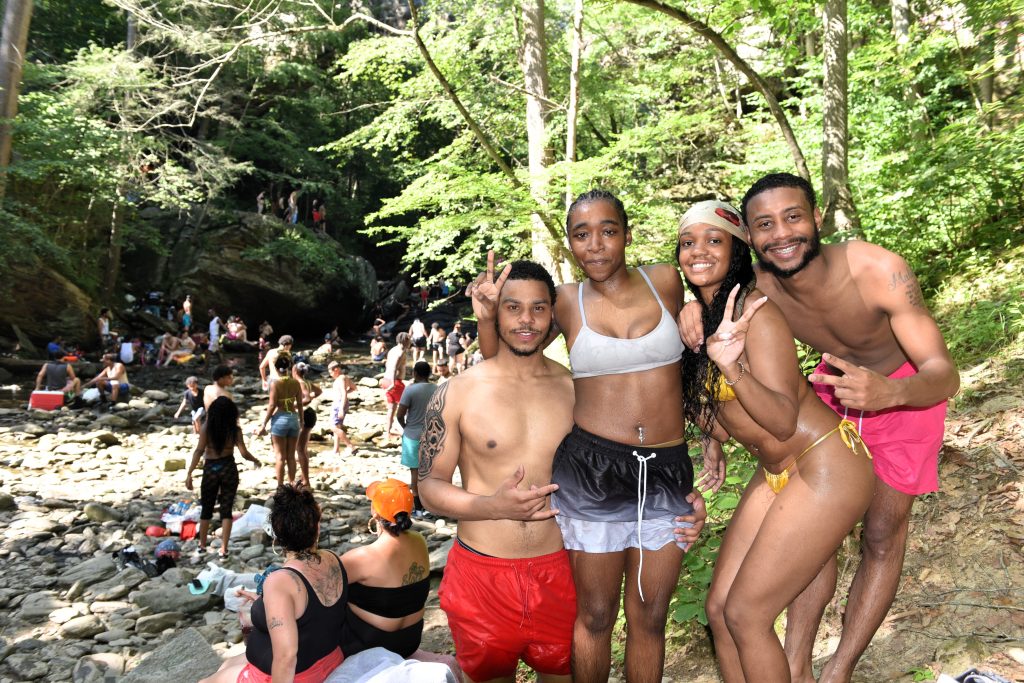
Cost-benefit analysis weighs heavily
Kelly Anderson, director of the Philadelphia Water Department Office of Watersheds, said that she has fond memories of family boat outings on the Delaware River while growing up in Riverton, N.J., just across from Northeast Philadelphia. She remains an advocate for river access and said PWD has worked with numerous nonprofits to promote free fishing days, build a kayak launch along the Schuylkill and support other programming.
She rejected the idea that there is a binary decision to be made by PWD or other agencies around water recreation. The Water Department has worked to measurably improve the quality of the city’s waterways throughout its existence and continues to do so, she said. But, she added, PWD must be judicious with ratepayers’ money and prioritize public safety.
“I’m coming at it from the perspective of a risk manager who is responsible for protecting public health and managing water quality,” Anderson said. “We have to be very clear-eyed about the risks that come from recreational uses.”
Councilmember Curtis Jones Jr., whose district includes both the Wissahickon Creek and Schuylkill River as it passes through Fairmount Park, has previously warned of the dangers of swimming in the city’s waterways, going so far as to call for filling in a notorious swimming hole with rocks. But he also said he views balancing industry and river recreation as an environmental justice issue. In 2018, Jones was among several councilmembers who participated in a Dad Vail rowing challenge on the Schuylkill. That led to a joint initiative with Temple University to get local kids, some of whom ended up with college scholarships, into rowing and crew.
“I think the river has the ability to transcend race, transcend economic classes and give people exposure not only to different views of the city, but different people from around the city,” Jones said.
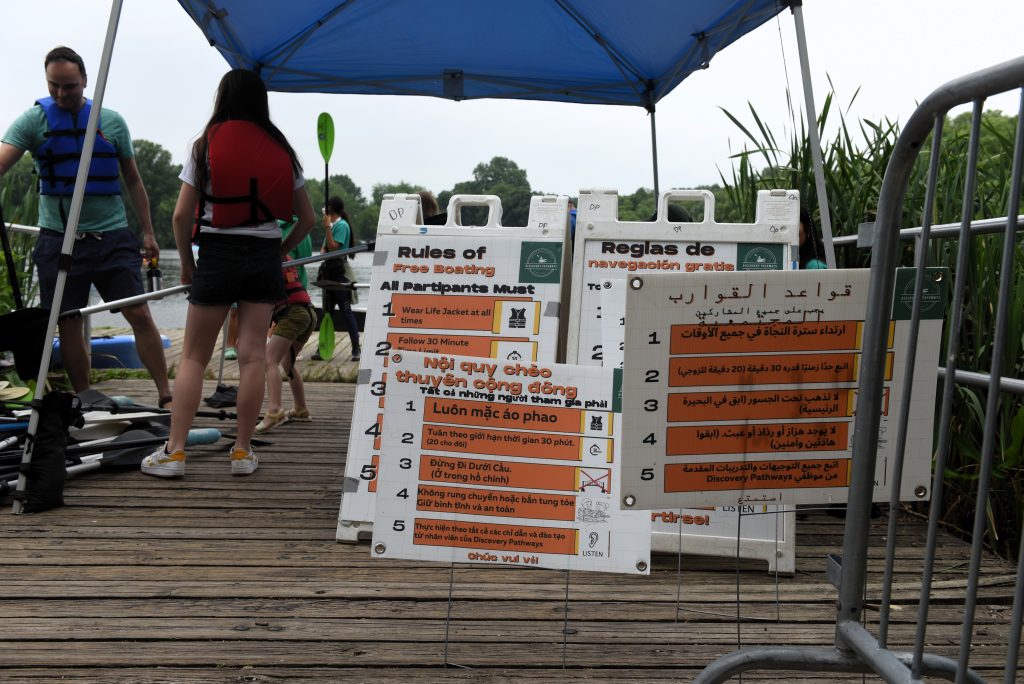
A city on the water
Today, Philadelphia’s public swimming pools dominate the water recreation space. But for centuries, it was the city’s rivers, lakes and creeks that residents flocked to in the summertime.
According to “Benjamin Franklin, Swimmer,” a 2021 book chronicling this lesser-known passion of Philadelphia’s favorite founding father, historical records suggest Franklin first learned to swim in the Schuylkill River, well before a modern-day prohibition went into effect. A century later came Walt Whitman’s numerous musings on the Delaware River and its natural beauties. And while Thomas Eakins’ famous paintings of rowers in Philadelphia’s waterways from the same era would look familiar to anyone passing by Boathouse Row today, other historical depictions would not:
For example, a colorful account of an impromptu swimming race held in 1875 by the “Schuylkill Navy” in the river near Manayunk’s Flat Rock dam, tells the story of the winner receiving a gold medal and the loser one made out of cowhide.
Newspaper photos from 1947 show two boys near a waterfall in Pennypack Creek, with a caption noting that “several supervised swimming holes” dotted its course through Northeast Philadelphia — an amenity also available at Cobbs Creek into the 1950s.
Two years after that, there’s a picture taken of four rowboats, one helmed by a quartet of women in white dresses and hair ribbons, making their way up a flat stretch of the Wissahickon Creek
And then there’s this, perhaps the grandest account of the relationship that once existed between Philadelphians and their waterways: a Philadelphia Inquirer snippet from July 1927 noting that, in the midst of a heat wave that had killed at least nine across the city, an estimated 6,000 people descended on FDR’s lake on a single day for a refreshing dip.
Other records from that era tell of a love affair between the city’s elected officials and its major waterways.
A 1920 Inquirer article announced passage of a City Council ordinance providing $48,000 (about $741,000 in today’s dollars) to dredge the Schuylkill and establish a “public bathing beach,” located between the Fairmount Dam and a public boathouse.
But this sentiment gave way by the mid-20th century, coinciding with an increase in the pollution of urban waterways. News reports in 1963 announced a proposed City Council ordinance to ban swimming in the city’s rivers and their tributaries, citing Health Department measurements of harmful levels of bacteria and other pollutants.
“In addition, strong currents, deep holes, and other hazards make most of the old riverfront ‘swimming holes’ undesirable for public use,” reads an editorial in The Inquirer supporting the proposed ban. The next year, a story in the same paper reported that the City Council opted to instead place signage along the waterways warning of their contamination, as a subcommittee had determined that a ban and any subsequent arrests were “of doubtful constitutionality.”
Indeed, navigable waterways such as the Delaware and Schuylkill Rivers are technically under federal jurisdiction. Nevertheless, current regulations of Philadelphia Parks & Recreation, which manages the city-owned land through which the vast majority of the city’s waterways can be accessed, contain an explicit policy that “no individual may bathe, swim or wade in any waterway or body of water in or at any Parks and Recreation Facility.”
Dillingham believes that Philadelphia — “always … a river city” — took a wrong turn when creeks began to be paved over and industrial pollution was allowed to fester.
“It was only when we polluted it in the name of commerce that we lost that relationship,” he said.
But not everyone is staying out of the water.
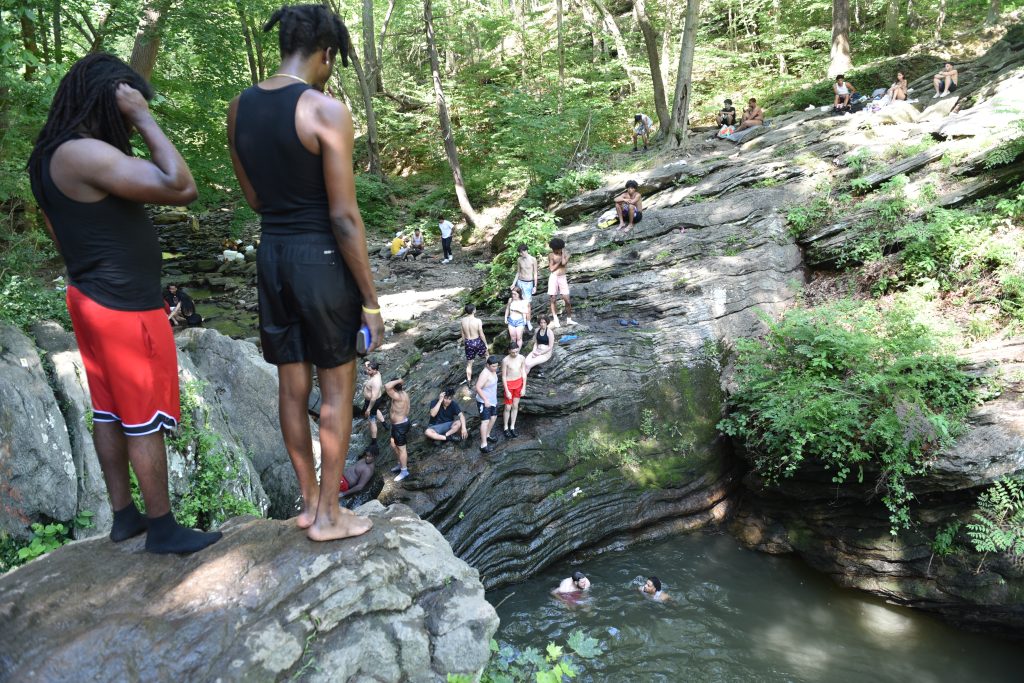
Lawsuits, public health and drownings
Symiya Taylor, a young woman from West Philadelphia, was keeping cool in the Wissahickon on June 24 when temperatures hit 100 in parts of Philadelphia, the first such recording in 13 years. A friend of Taylor’s from New Jersey had previously visited the creek’s infamous Devil’s Pool, a natural swimming hole created by the drainage of Cresheim Creek into the Wissahickon. Now, he had brought Taylor and two other friends to swim, jump from the large slabs of rock that ring the pool and enjoy the outdoors.
They weren’t alone. Some 200 people had gathered at the spot: a group of friends playing dominos on the rocky delta of the creeks’ confluence as smoke wafted from a grill, an immigrant from India keeping close eye on his three young boys wading nearby, scores of people swimming and two dozen more waiting their turn to cliff dive into the water.
“I like the thrill of it,” Taylor said after doing her first jump. “But I couldn’t feel the bottom and I was panicking on the first swim.”
Officially, swimming in the Wissahickon is prohibited by Parks & Recreation’s citywide swimming ban. The nonprofit Friends of the Wissahickon, which voluntarily maintains much of the park, notes that the ban is a city policy, not the organization’s. Nevertheless, FOW agrees that swimming is hazardous and posts warnings on its website.
“The waterways in Wissahickon Valley Park are not designated swimming areas, so they are unsupervised, and that alone makes them hazardous places to swim,” said Sarah Marley, interim executive director of FOW. “But there are many other dangers when swimming in the Wissahickon Creek and Devil’s Pool. Strong currents can lead to drowning, submerged objects can cause severe injury and poor water quality can result in skin infections and/or gastrointestinal distress.”
The dangers are not just theoretical. In June 2023, two visitors to the Wissahickon drowned less than three weeks apart: a 38-year-old man police say accidentally fell into Devil’s Pool and a 21-year-old man who experienced distress while swimming on a 94-degree day. A decade earlier, the Wissahickon made international news when a father jumped into the creek in an attempt to save his struggling 13-year-old son. Both drowned.
Historically, drownings and injuries have occurred across all of the city’s waterways, not just the Wissahickon. In June 1952, The Inquirer reported an 18-year-old lifeguard in the Pennypack described as an “expert swimmer” drowned in the rain-swollen creek. He and other lifeguards had rowed to a log they mistook for a body and were sucked over an 11-foot dam.
Less well documented are potential harms from illness contracted while swimming.
Public health experts say linking something like a stomach bug to swallowing a pathogen while swimming is notoriously difficult to do. The sick person might not even realize the connection, let alone report it to authorities. But scientists are able to provide estimates through modeling. A 2024 study of the Wissahickon, Tacony and Cobbs Creeks led by Temple University researchers took samples from popular areas of the waterways and found risks ranging from about one to 37 illnesses for every 1,000 exposures, depending on the creek and activity.
Still, risk is relative, and even acceptable under public health guidelines. The U.S. Environmental Protection Agency, for example, recommends that states set safety thresholds for freshwater recreation between 32 and 36 illnesses per 1,000 exposures. That raises the question of how far Philadelphia waterways are from such thresholds. The 2024 study, for example, found that the risk of contracting an illness from pathogens while swimming in Devil’s Pool may be just 1 in 1,000. It used assessment methods that differed from those used by regulators, however, and notes that risks depend on variables like recent precipitation.
This dynamic can be seen elsewhere across the city. In FDR Park’s lake, water testing performed in the summer of 2024 by Discovery Pathways for E. coli, a harmful bacteria linked to sewage, found that levels only exceeded the EPA’s guidelines for safe swimming during one week out of 15.
Kroll said such data highlight a potential gap between the actual conditions of some of the city’s waterways and publicly held beliefs. Visitors to the Wissahickon often hear that the creek is downstream from several municipal wastewater treatment plants. This is true: A series of municipal sewage plants in Montgomery County release treated sewer water into creeks that feed the Wissahickon before it flows into Philadelphia. Calculations have suggested that as much as half of the creek’s water may be attributed to these releases at certain points of time.
This does not make the creek inherently unsafe to swim in, however, as modern-day treatment plants effectively remove pathogens found in sewage before releasing treated water. Instead, dangerous pathogens found in the Wissahickon primarily come from sources such as feces from animals (and human visitors) that — along with pesticides, lawn fertilizers and motor oil — wash into it during rainstorms.
But many Philadelphia waterways are in fact polluted by the city’s aging combined sewer systems, which are designed to intentionally release raw sewage during rainstorms into waterways like the Schuylkill, Delaware and the Tacony-Frankford Creek. That causes pathogen levels to spike and can make the water undeniably hazardous even for fishing and kayaking in the days after a storm. A 2021 study of common recreational spots in the Delaware River and Cobbs and Tacony creeks found that nearby combined sewer overflows increased the risk of contracting an illness by between 39 and 79 percent.
These risks can also have repercussions. Nonprofits that oversee many of the city’s watershed parks note that they can be held financially liable for accidents. In 2020, the Friends of Pennypack Park, a primary caretaker organization of that ribbon of green space in the Northeast for 40 years, disbanded after being sued twice in quick succession, once by the family of a girl injured by a falling tree branch, and then by the family of a boy who drowned while fishing.
Joseph Syrnick, president of Schuylkill Banks, a nonprofit focused on waterfront recreation in Center City, said his group “gets sued more than you would think” by people who have claimed some form of harm after interacting with the water from their dock near Walnut Street. He joined others in saying the dynamic can create a disincentive for waterfront caretakers to officially open their facilities for public recreation.
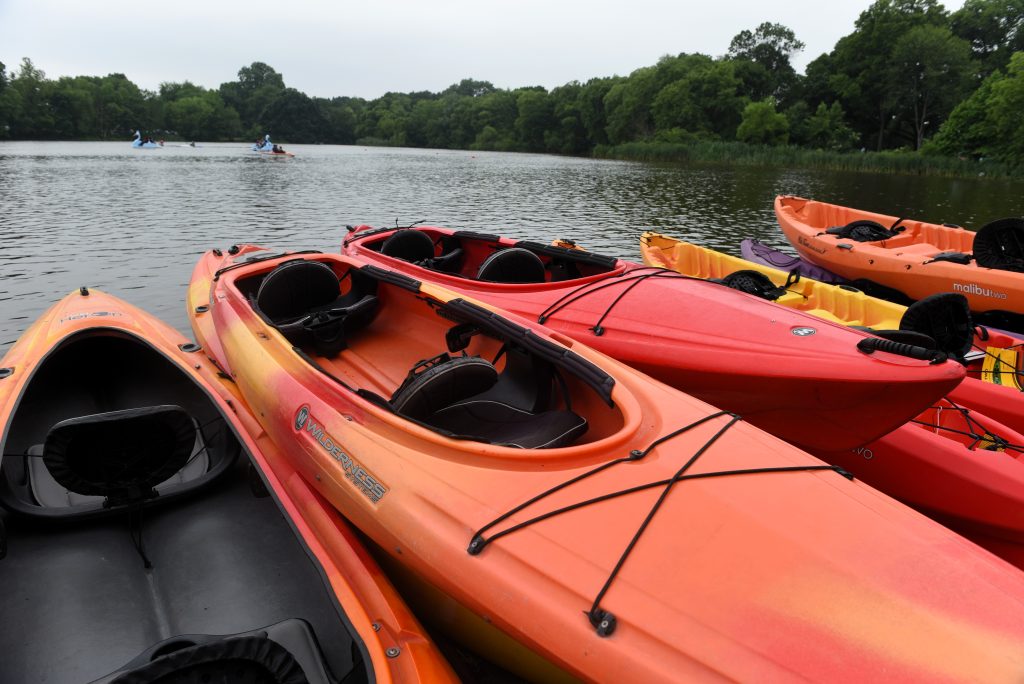
Questions of costs
There are also questions of cost. The Philadelphia Water Department is currently spending billions of dollars in an effort to decrease the volume of sewage overflows each year — a cost passed on to residents via a fee on their monthly water bills. Anderson said the department would likely need to spend much more to get all of the city’s waterways to a swimmable standard.
Increasing access to the river would also mean spending money on new boat ramps, water patrols and perhaps even lifeguards, in a city where Parks & Recreation has already struggled in recent years to fully staff its 60-some public swimming pools.
Still, water recreation advocates believe these challenges can be overcome if the issue is prioritized and creative solutions are implemented. Syrnick said that something as simple as a locked gate on Schuylkill Banks’ dock helps provide legal cover if a person hops it and gets into a trouble on the river.
Kroll also acknowledges that water recreation comes with risks but said boating safety can be taught just like bicycle safety, noting that of the 150,000 paddlers Riverways has helped get on the city’s waters since 2017, not one has drowned.
She also said the health of the city’s waterways has already improved significantly since the 1972 passage of the federal Clean Water Act, which implemented new rules on pollution that drove vast improvements in water quality across the country, particularly near cities. She envisions a future where the legislation’s ultimate goal of “swimmable, fishable” rivers is fully realized in Philadelphia. After all, Paris just reopened the Seine to swimming for the first time in a century after a concerted cleanup effort.
“I tell people I’m 45 years old and my dream is to, before I’m too old, have beaches on the Delaware and the Schuylkill,” Kroll said. “If you’ve ever been to Chicago and you walk out of the city and go to the lake — that used to be really dirty, too. So I think it’s doable.”
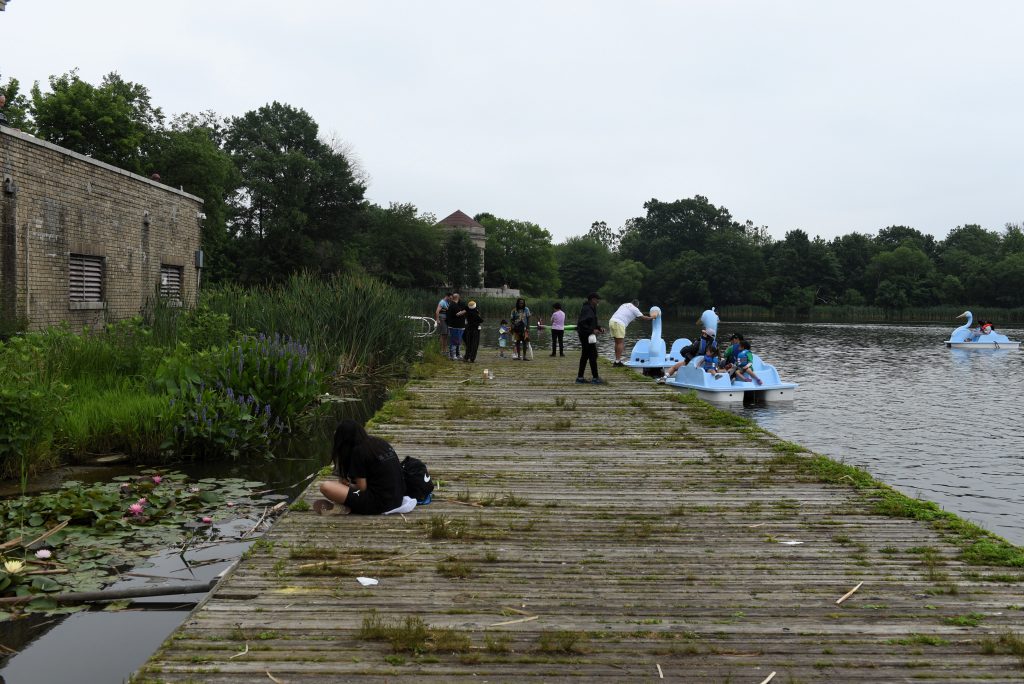
A confluence of factors
So, do powerful stakeholders share this vision of a water-happy Philadelphia?
The federal Clean Water Act created a regulatory system in which the EPA and state deputies like the Pennsylvania Department of Environmental Protection determine which recreational activities should be available in a particular waterway, and thus to what degree they need to crack down on nearby polluters.
Most attention in Philadelphia is on the Delaware River, where the interstate Delaware River Basin Commission has debated in recent years whether to upgrade the regulatory designation of the stretch of river passing through Philadelphia to match that upstream in Northeast Pennsylvania and downstream in the Delaware Bay. Doing so would require water quality suitable for such “primary contact” recreational activities as swimming and tubing. Environmental groups and some members of City Council, led by Councilmember Mark Squilla, have supported a regulatory upgrade, saying the river has improved enough in recent decades to warrant it. That could force industrial polluters and sewage plants to spend more money on newer treatment methods.
But in 2023, the Philadelphia Water Department released a 178-page study on recreation in the river that reads like an extended laundry list of all the reasons the regulatory upgrade is not a good idea: the traffic of huge commercial container ships, powerful currents, floating debris and too few points of ingress and egress chief among them.
“Without the ability to maintain a safe distance from the federal navigation channel, swimmers and paddlers are especially vulnerable to maritime hazards,” the report said.
The dynamics are also complicated in smaller Philadelphia waterways like the Wissahickon, where the DEP’s regulations technically say the water doesn’t meet safe pathogen levels for recreation. But in an email, DEP spokesman Neil Shader said the state’s findings do not automatically create legal prohibitions on swimming, which are instead determined by state or local regulations, such as the city’s swimming ban.
Asked about data suggesting that pathogen levels may actually be low enough to safely swim under the right conditions, Shader also said the DEP’s designations are “not appropriate to be used to determine if it is safe to swim,” as data is not collected frequently enough to evaluate changing conditions. Instead, the Pennsylvania Department of Health often regulates public swimming beaches via more regular sampling. But the city conducts no such regimen in the Wissahickon.
The fact that neither federal nor state entities have forbidden recreation on Philadelphia’s waterways, and indeed to varying degrees support adding more of it, adds to the frustration of some advocates about the city’s policies and priorities.
Despite Riverways’ data suggesting low levels of E. coli at FDR Park, the park’s aging dock, patched with wooden panels and beset by weeds, was not included on the initial list of major repairs and upgrades as part of the park’s $250 million renovation, led by the Fairmount Park Conservancy in partnership with Parks & Recreation.
A new tide gate installed at the south end of the park in 2024 keeps out sewage-contaminated river water that may have helped lower pathogen levels, Forbes said. But it also appears to have cut off the lake’s waters from tidal influences, which Riverways believes stagnated the water and contributed to an algal bloom that plagued the lake in the summer of 2024. Similar lakes elsewhere use chemicals or aerators to address such problems.
The Fairmount Park Conservancy said the tide gate is working to achieve FDR’s redesign objectives, including reducing flooding, allowing stormwater with pollutants from nearby roadways to flow out of the park and helping to establish a 33-acre tidal wetland.
Conservancy spokesperson Cari Feiler Bender said that the lake’s dock is “safe” and “functional” and that efforts are focused on amenities such as basketball, football and soccer. The organization’s chief of staff, Kevin Roche, added that renovation plans call for eventually restoring Shedbrook Creek in FDR’s western half, opening the little-known waterway for the first time to activities like kayaking.
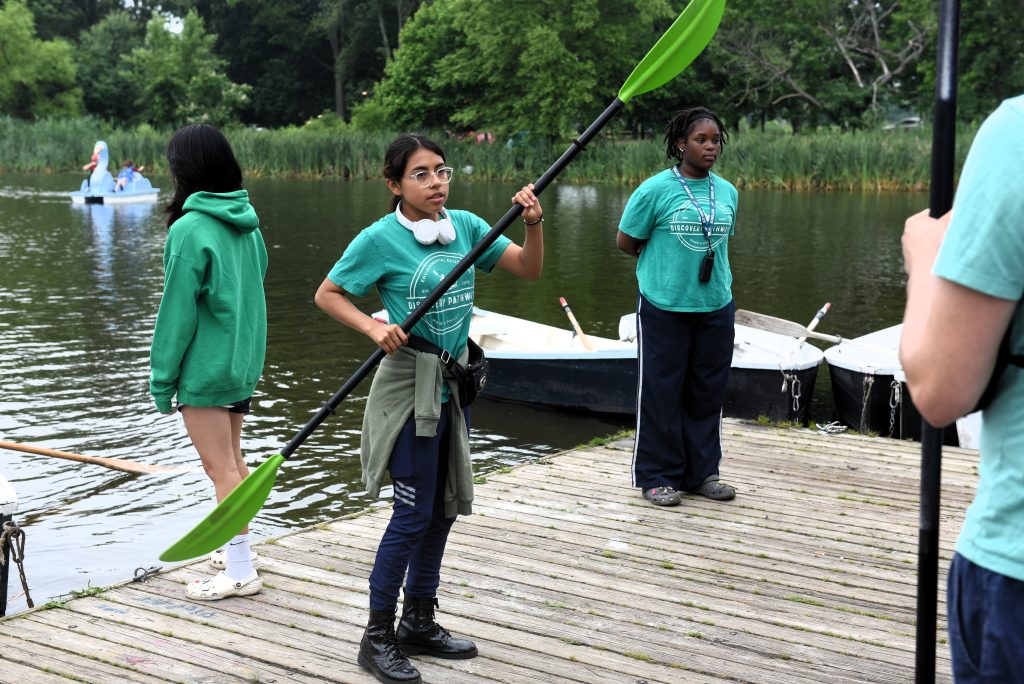
Where to place priorities?
Boating on the Schuylkill is perhaps the city’s most visibly robust form of water-based recreation. But even there, public access points and boat launches remain few and far between. Over the past decade, PWD and Parks & Recreation collaborated on two multimillion-dollar projects along the waterfront in Manayunk: one to overhaul a recreational area on Venice Island, and another to perform a major restoration of water flow into the Manayunk Canal. Neither facilitated access for on-water recreation.
However, PWD’s Anderson points out, the two city agencies supported the construction of a new kayak launch in 2021 just downriver in East Falls. The Water Department also created and continues to maintain RiverCast, a website that provides real-time assessments of whether the Schuylkill’s water quality is safe for activities like kayaking.
“We support recreation where and when it’s safe to do so,” Anderson said.
She also said that the department remains committed to reducing combined sewer overflows and that pipes that directly pollute parks like Bartram’s Garden and Tacony Creek Park are “top priorities.” But Anderson said that getting all of Philadelphia’s waterways to swimmable standards would cost in excess of the billions of dollars it is already spending to reduce combined sewers, and may also be beyond PWD’s powers to control, as pollution such as stormwater runoff filters into the rivers from upstream.
“The job is never done,” Anderson said. “But we’re also managing PFAS, right? Also managing climate change. Also managing biosolids. The list goes on and on…. At some point you really have to, you know — thinking about ratepayers — pick what makes the most sense.”
Asked if the Fairmount Park Conservancy, which serves as the city’s primary nonprofit parks partner along the Schuylkill, ever has conversations about installing more boat launches, Roche demurred. He suggested that perhaps it was time to bring together public and private stakeholders across the city, similar to ongoing initiatives for hiking and biking trails, and develop a comprehensive water recreation strategy.
Still, Kroll and Dillingham doubt that key stakeholders are as interested in increasing public access to the water as they are. For them, the dynamics feel like a far cry from days when Philadelphia spent money to create public bathing areas and staffed Cobbs and Pennypack Creeks with lifeguards, or the contemporary efforts of peer cities like Chicago and Washington, D.C., to achieve swimmable and fishable waterways more quickly.
“I’m not sympathetic to it at all,” Dillingham said of the argument that water-based recreation is too difficult or expensive to prioritize. “Yes, everyone wants to be cognizant about the impact that rates might have on lower-income folks. But for too long, it’s been an excuse to not be aggressive or visionary about how we treat the water.”
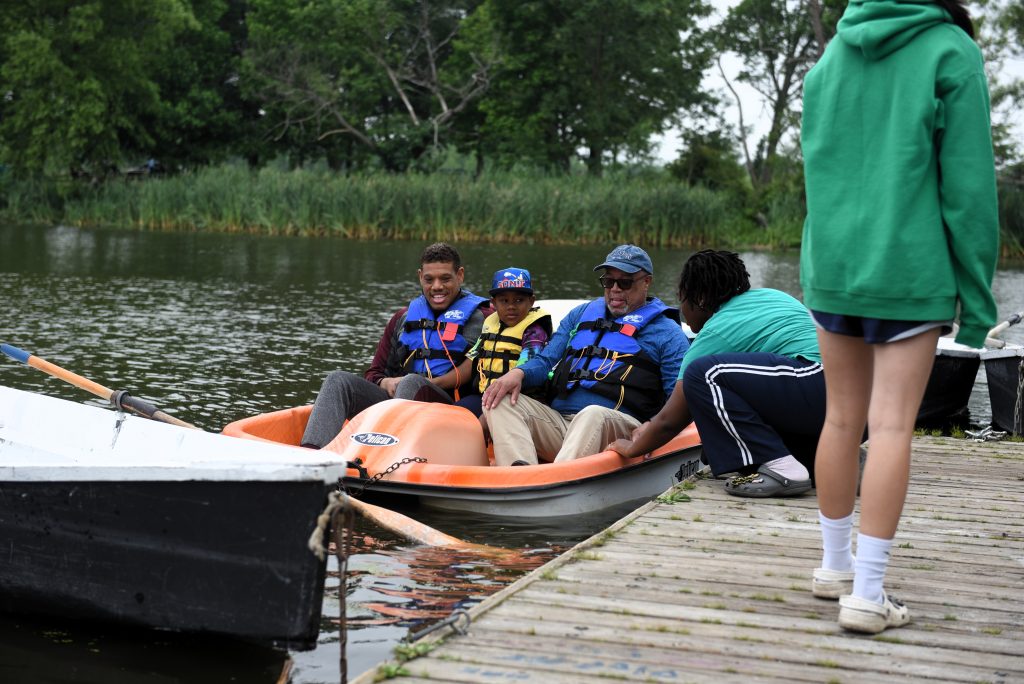
Float on
What is the ceiling on Philadelphia’s water recreation potential? Other players in the space vacillate between optimism and realism.
Stuart Clarke, manager of the Environment and Public Space program at the William Penn Foundation, said improving water quality around the city and providing increased access and water-based programming are all objectives of the foundation. He sees the right conditions — advocacy, a regulatory framework and federal and state funding sources — to improve water quality and notes that the foundation has a grantmaking objective to dramatically reduce combined sewer overflows by 2035. The foundation also provides funding to groups like Discovery Pathways and Riverways to support their growing programming.
But Clarke’s view isn’t all roses. He acknowledges that sewage pollution is just one of several recreation hazards in the Delaware and said that he too wonders about the level of interest citywide, particularly among entities “in a position to make investments or prioritize” the issue.
“We’re seeing substantial enthusiasm within the Greater Philadelphia community for this work,” Clarke said. “What I don’t think we see as much as we might is an understanding that access to the natural environment — access to programming — is public health infrastructure. These are critical investments to ensure the health and flourishing of the regional population.”
Justin DiBerardinis, executive director of the nonprofit Tookany/Tacony-Frankford Watershed Partnership, which supports the 300-acre Tacony Creek Park, has visions of turning it into the “Wissahickon of North Philadelphia.” He’s actively seeking grant money to help address large overflows of sewage into the creek and hopes that one day it will be clean enough to stock sport fish.
But swimming? Given the crowds and littering problems he knows exist at Devil’s Pool, along with all of the other inherent challenges for this holy grail of water recreation, DiBerardinis has doubts.
“Boatable, fishable, that’s there and that should be encouraged at the highest levels,” he said. “Can we be at a point where we can say as a city that [our waters] are safe to swim in? I don’t think that’s realistic.”
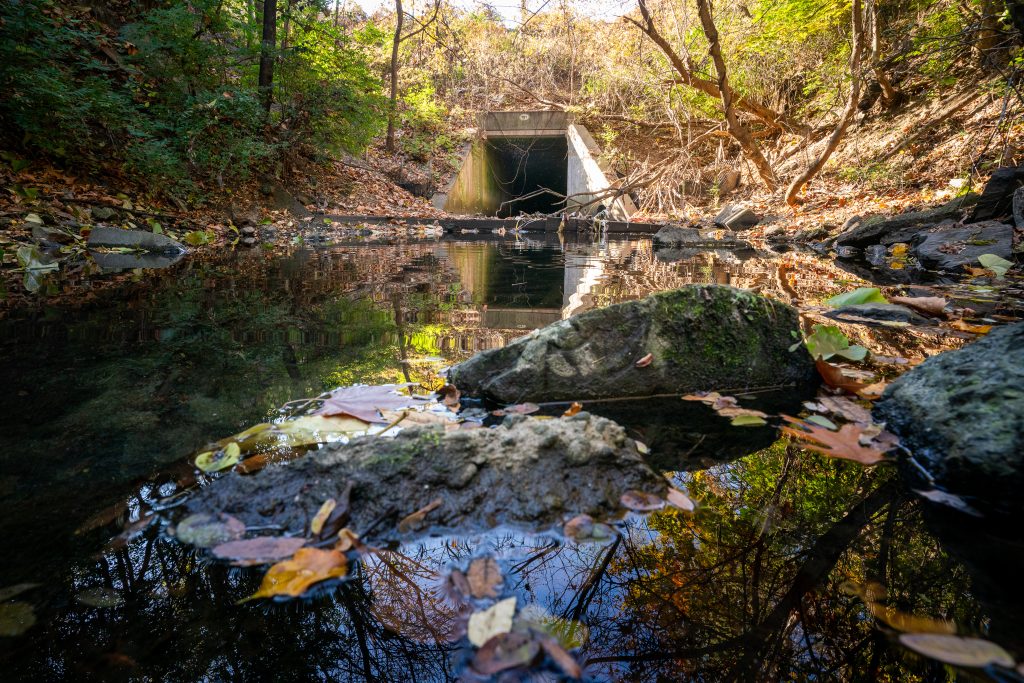
However, FOW’s Marley said that her organization believes there are too many hazards in the Philadelphia stretch of the creek — dams, submerged objects, flash flooding conditions — and a lack of resources for lifeguards.
“Trying to obtain any kind of regular supervision of people either swimming or boating in such an inherently problematic area with often unpredictable conditions does not feel feasible or justifiable,” Marley said.
Syrnick, of Schuylkill Banks, said his organization originally formed more than 20 years ago out of a desire to push city officials to “get off their rear ends and do something” about reconnecting Philadelphians to the river as it passed through Center City.
He feels they’ve achieved that goal over the decades, but by actually developing a closer working relationship with the city. The skinny swath of land separating Center City from the east banks of the Schuylkill used to only be an industrial corridor, he said. The train tracks are still there, but much of the strip is also now a green oasis where people come to run, fish, relax and occasionally launch a kayak. Vendor Hidden River Outfitters, which offers kayak tours of Center City, regularly sells out paddling excursions that launch from Schuylkill Banks’ dock, and Syrnick’s organization plans to build another dock south of Walnut Street that would be flush with the water and thus more conducive to launching kayaks.
Maitreyi Roy, executive director of Bartram’s Garden, a 50-acre park abutting the Schuylkill in Southwest Philadelphia, said local interest in its paddling and fishing programs has grown exponentially over the past decade. Combined sewer overflows cancel about a quarter of their on-river programs due to unsafe levels of pathogens, but Roy said she’s presently working in good faith with PWD to find solutions. Even if the Schuylkill’s waters were to become immaculately clean overnight, she feels much more is needed before Philadelphians can safely take to the river on their own in large numbers, given the river’s powerful currents and other hazards.
“We have to take the long view,” Roy said. “There’s no, you know, ‘Turn on this switch and it’ll be done.’ It’s a generational challenge.”
But she agrees wholeheartedly with Forbes that it’s worth doing. While some view kayaking and river swimming as appealing primarily to white and upper-class Philadelphians, both advocates say their programming draws a diverse mix of Latino, Black and Asian attendees eager to get onto the water. Providing those opportunities, they say, is an ideal way to get people thinking about the health of local rivers and creeks and the influence of humans.
Perhaps no one is more emblematic of that than 17-year-old Tha Oo. During a recent Discovery Pathways paddle at FDR, the rising senior at George Washington Carver High School of Engineering and Science in North Philadelphia supervised junior members of the organization as they helped visitors into and out of kayaks and rowboats. Like many of his peers, Oo had never been on the water prior to joining the group four years ago. He said his first time out was “scary” but that he learned to overcome the fear and began thinking about his relationship with the rivers, creeks and lakes that dot Philadelphia’s landscape. Now, he dreams of becoming an environmental engineer.
“Before I joined the program, I had a bad habit of polluting and not being a really good environmental person,” Oo said. “But after joining, I’m seeing more opportunities for me in environmental protection and telling others to stop polluting.”
This article was produced in partnership with Chestnut Hill Local and Grid Magazine.


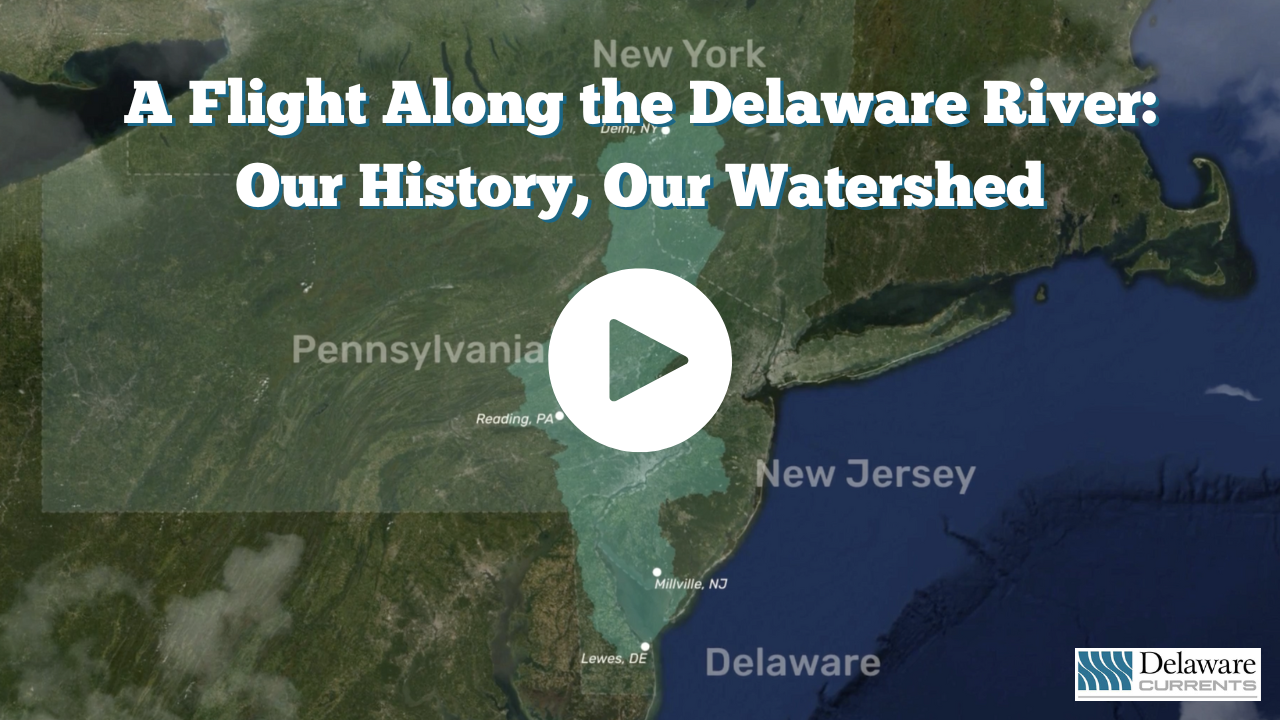
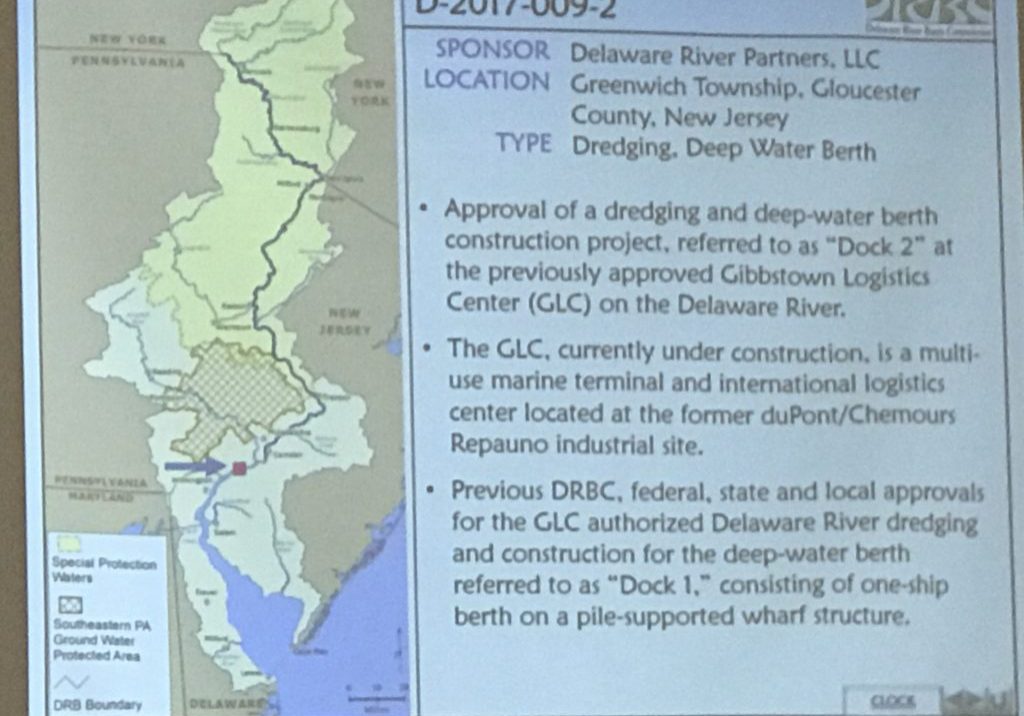
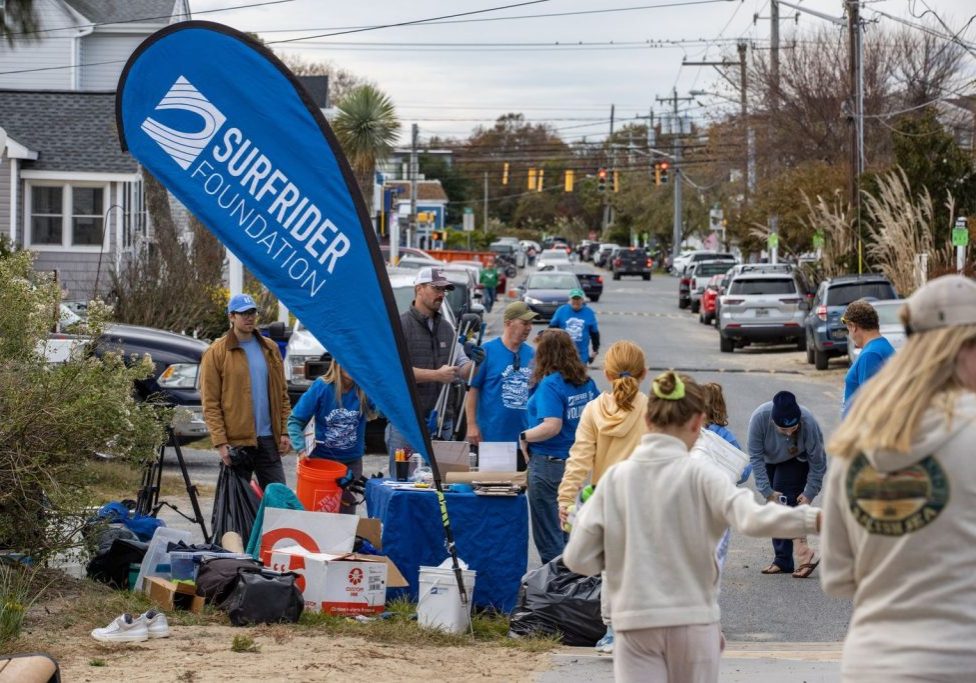
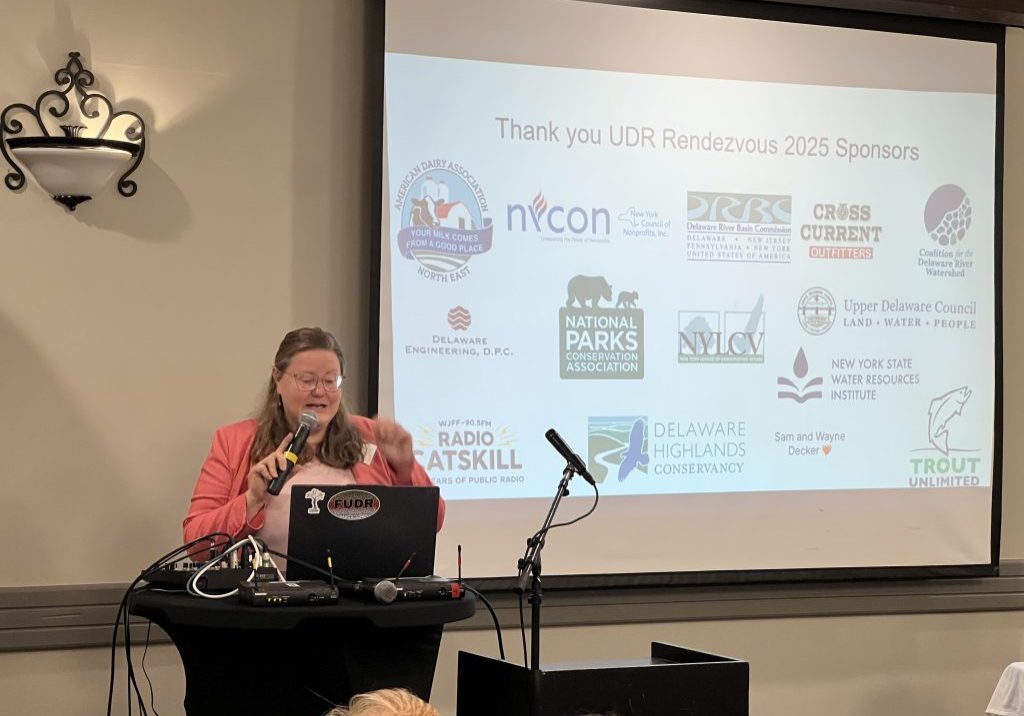
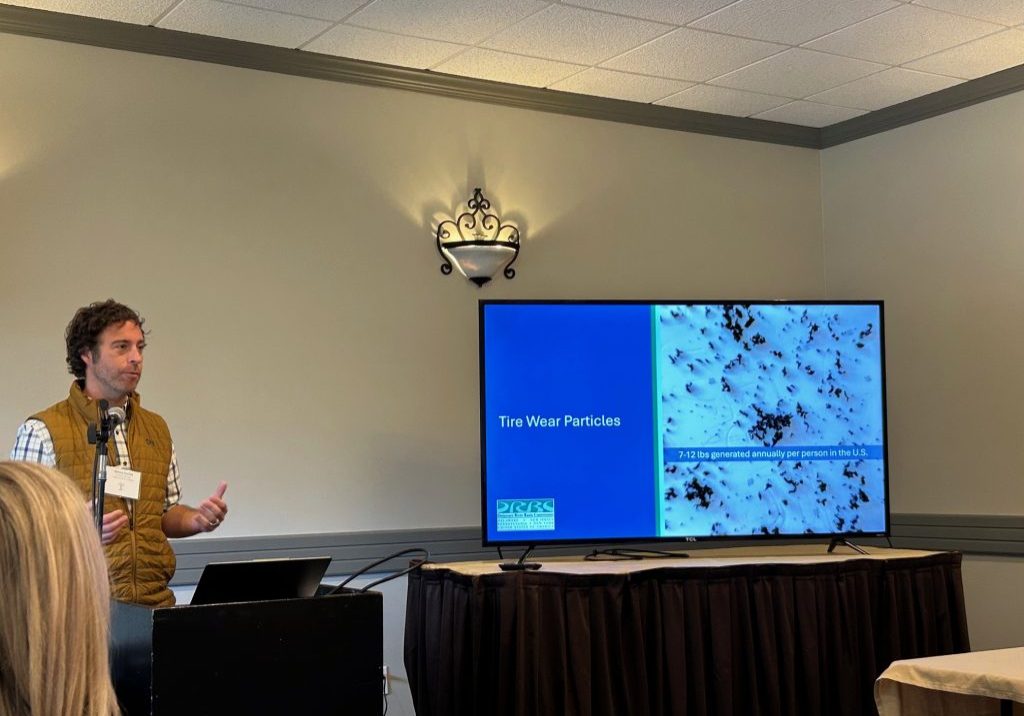
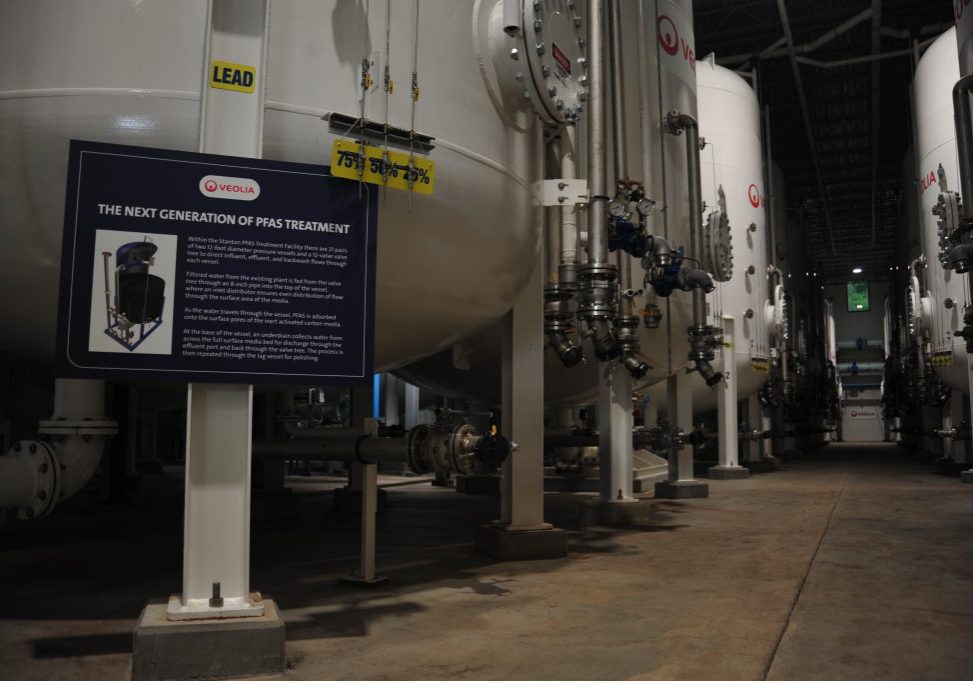
awesome